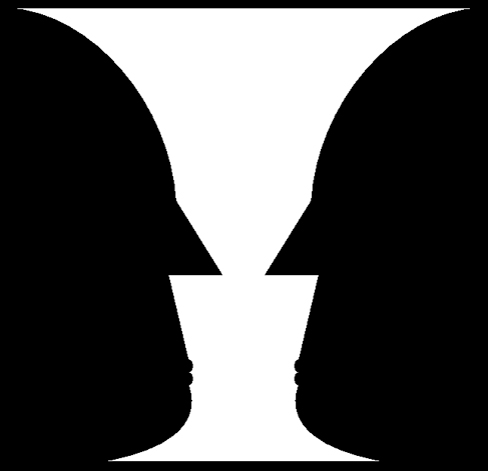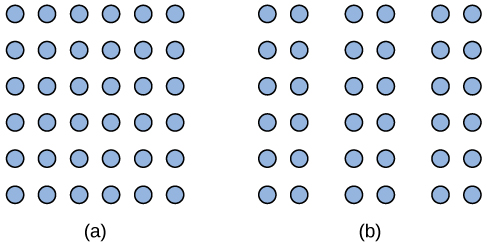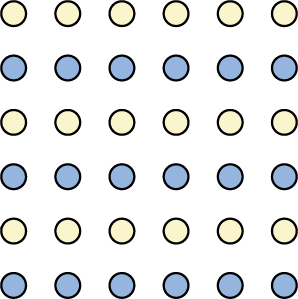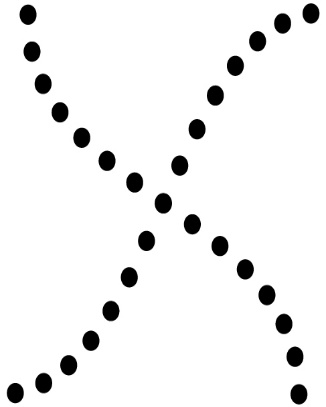32 5.3. Gestalt Principles of Perception
In the early part of the 20th century, inspired by a children’s toy, Max Wertheimer a German psychologist published a paper demonstrating that individuals perceived motion when watching rapidly presented still images. This is similar to how a Disney cartoon is made —photos are taken of sets of drawings, each one with a very slight difference. Then when they are presented in quick succession, it looks like the objects and people in the pictures are moving. A flip book works on the same principle. Wertheimer (along with Kohler and Koffka) used this example to demonstrate that perception involved more than combining simple sensations. We are not aware of each individual picture – we perceive something new—apparent motion. This discovery led to a new movement within the field of psychology known as Gestalt psychology. The word gestalt is used to mean the “whole structure”, but its use reflects the idea that the whole perception is different from the sum of its parts. In other words, the brain creates a perception (such as motion) that is more than simply the sum of available sensory inputs (lots of static images). Gestalt psychologists discovered that visual perception depends on a number of predictable principles that the brain uses to organize sensory information. As a result, Gestalt psychology has been extremely influential in the area of sensation and perception (Rock & Palmer, 1990).
Gestalt psychologists often used optical illusions to demonstrate the principles. For example, if we look at a picture (or a scene in the real world) we make assumptions about figure-ground relationships. Figure refers to central object(s) in the scene, while the ground refers to the background. In general, the figure is more meaningful (i.e., we can recognize it), and tends to be smaller and lower down in the scene than the ground. What do you see in Figure 5.14? It is likely that your perception will switch between seeing faces or a vase. So, one minute, you perceive the vases as the figure, and the next, you perceive the faces. If we think about Gestalt figure-ground principles, neither black or white object(s) are clearly the figure– they are both in a similar position, meaningful, and about the same size (Peterson & Gibson, 1994; Vecera & O’Reilly, 1998).

Another Gestalt principle for organizing sensory stimuli into meaningful perceptions is proximity. When things are close to one another, we tend to group them together to form objects. In Figure 5.15a we see a square, and in Figure 5.15b we perceive three columns. The organization of the dots changes our perception.

We also use the principle of similarity to group elements into “whole” objects. Things that are alike tend to be grouped together. In Figure 5.16 you probably perceive the figure as being organized in alternating rows (same color) rather than columns.

Two additional Gestalt principles are continuity (or good continuation) and closure. The principle of continuity suggests that we are more likely to perceive lines as continuous and smooth rather than broken or going in strange angles (Figure 5.17).

The principle of closure states that we organize our perceptions into complete objects rather than as a series of parts (Figure 5.18). Closure allows our brain to fill in the parts we cannot see.

Link to Learning
Watch this video showing real world examples of Gestalt principles to learn more.
According to Gestalt theorists, our ability to discriminate among shapes and objects occurs because our brains gain experience of the world and then automatically use the Gestalt principles described above to interpret what we see. You probably feel fairly certain that your perception accurately matches the real world, but this is not always the case. Our perceptions are based on educated guesses. These guesses are influenced by a number of factors, including our experiences, expectations, personality, and even what we have just been doing, thinking, and feeling. So, each time we make an interpretation of the world around us, we do so with a particular perceptual set, i.e., some expectation of what we are going to perceive. Priming studies in psychology show us that it is easy to change someone’s perceptual set, simply by presenting some other stimulus prior to a perceptual task. Priming explains why it is easier to startle someone after watching a scary movie. The content of the movie changes our perceptual set.
Stereotypes and bias can also affect perceptual set and perceptual task performance. For example, the ability of non-Black participants to quickly decide whether they are looking at a picture of a gun or a tool (weapon identification task) is influenced by whether they see a picture of a Black or White male just before it (Figure 5.19). Non-Black participants identify guns faster and are more likely to identify tools as guns when the image is paired with a picture of a Black man (Payne, 2001; Payne et al., 2005; Payne & Correll, 2020). Research shows that this type of bias is largely unconscious or implicit. Non-Black participants do not necessarily endorse explicitly prejudiced views toward Black and Brown people. Nevertheless, disproportionately large numbers of unarmed Black and Brown people have been killed by police officers and others claiming that they believed that the victim had a gun and/or represented some threat to their personal safety. Psychologists like Stanford Professor and recipient of the MacArthur Genius Award, Jennifer Eberhardt, and Director of the Center for Policing Equity, Phillip Goff, are fierce advocates for social justice. Both have worked with police departments to help officers recognize implicit bias and to learn strategies to reduce its impact on policing.

